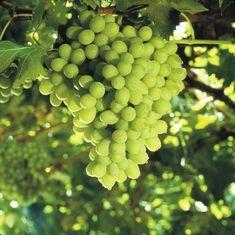
Grapes would not have been the category most people would have bet on being the success story of the summer, but the industry has been buoyed by a set of strong recent sales figures.
The latest dataset from Kantar Worldpanel shows there has been a £55 million sales injection into the category in the year to 8 July on the back of a 9.7 per cent increase [Kantar Worldpanel]. Volumes are up 15.8 per cent, a 29,000 tonne rise.
Sources say the increase has come from better planning from suppliers, combined with a successful retail promotional strategy that has helped encourage consumers to buy into the category more frequently than before.
“There’s been some really significant growth spurred by retailers driving sales though promotions, and especially multibuys,” says one supplier.
‘The grape category is quite mature, so this sort of growth is great news for the industry. The whole supply chain would back that approach.”
Grower-based suppliers have been developing longer-term marketing plans, according to the source, which has helped supermarkets in their promotions planning. And suppliers are confident the sales momentum will continue into the autumn, with supermarkets expected to adopt similar promotional practices again in the coming months.
A retail source says promotions are here to stay and stores are optimistic about the future of the category. “We’ve been pretty focused on the quality and I think we’ve had the right approach,” he says. “Customers have appreciated the straightforward retail prices.”
A spokeswoman for Asda adds: “Growth has come through having a strong and consistent price offer on punnets. Each year we are seeing loose grape sales being eroded by the punnet offer because customers like to see exactly how much they are spending before they get to the checkout. There has also been a significant increase in sales of black seedless as the former procurement gaps are starting to be filled with new varieties and newer plantings.”
Importers also claim production issues have affected the figures.
A lack of rainfall in South Africa last year pushed prices up and availability down, while the Chilean earthquake in 2010 also hit availability, sending value sales above volume last year, according to one importer. Exports of Chilean table grapes fell by 4.6 per cent during the 2011-12 season to 813,510 tonnes, according to reports in the country’s media, with weather conditions primarily pinpointed as the source of the fall.
“It was a season marked firstly by the frost and snowstorm in Copiapó in July 2011, which caused a smaller volume of exportable fruit in the earliest varieties,” explains Ronald Bown, chairman of the Chilean Fruit Exporters Association. “Then high temperatures affected the northern and central-southern regions of the country, causing an advance in the ripening of the [grape] berries and the distribution of sizes in the bunches, which meant the fruit was inclined towards smaller sizes and resulted in a lower exportable volume.”
In terms of the current season, importers are switching over from the end of the southern hemisphere season to European supply. “European stocks are much tighter now and we’ll find a stronger market as growers and exporters pick and choose the markets they want to supply,” says a source.
With Moroccan fruit coming to the market early this year, the normally high price for Egyptian product has been lowered. In North America, the Californian grape season out of San Joaquin Valley got underway last month with the first shipments of Flame Seedless from the Bakersfield area, according to Americafruit.
“The San Joaquin Valley deal is off to a spectacular start,” said Todd Bassett, who inspects grape quality on behalf of domestic and international clients. “The fruit this year is clean, hard with great colour and sugar levels are off the charts on just about all the early lots being picked. It’s been a long time since. It’s simply one of the best starts to the deal that I can remember.” -
BOOSTING GRAPE QUALITY
Bayer CropScience has been doing a wide range of work with growers to develop solutions for grapes, as Bayer food industry manager Dr Stephen Humphreys explains
Why is Bayer focusing on grapes?
High-quality fruit and vegetables are the basis for a healthy diet and year-round consumer demand is increasing. Grapes are one of the most widely-grown fruit crops in the world - it’s an important market.
What does Bayer CropScience hope to achieve, and what has happened so far?
The main goal is to meet the requirements of an increasingly demanding market. It’s driven by quality, safety and sustainability standards.
To achieve this aim, we have developed and implemented grape protection programmes which help protect grapes, while also exceeding those standards at the same time.
In all, we facilitate some 240 food-chain partnerships worldwide on more than 40 different crops in over 30 countries. For example, in Italy we are a partner in a programme called MAGIS, which has been developed to support the sustainable production of wine grapes.
In Chile and India we help growers to produce table grapes for domestic and export markets.
What is the biggest threat to this sector?
We see several challenges for grape production. Grape quality is more sensitive to temperature change than most other crops. New pests and diseases also impact the production of grapes and a shorter growing season in several countries is compressing harvest periods, causing higher work-peaks for picking, packaging and transport.
Grape growers face further challenges because of regulatory requirements in domestic and export markets.
What’s the next step for Bayer on grapes?
Today, we have many truly committed partnerships in place and a strong level of co-operation established. We are constantly expanding our global food-chain partnership activities. Our goal is to increase the sustainability of production of high-quality grapes. We’ve already made great strides and will continue to do so in the future. -



